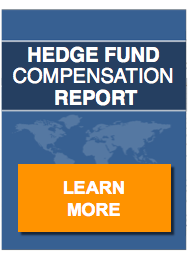Headlines are designed to attract the interest of readers. In the past, when print media was king, headlines sold newspapers (and of course they still do). Now, in a news world dominated increasingly by the Internet, headlines are still the best means of encouraging that all important “click.”
Clicks are the modern equivalent of daily circulation and circulation is the driver of advertising costs. The higher a publication’s circulation, the more it can charge its advertisers, and revenue from advertising is the lifeblood of the news business, print and digital.
It Makes a Good Read
Let’s be honest, when passing a newsstand or browsing the Internet, a headline such as “The Fish Stinks from the Head” is more compelling than “Office Workers Raise 5 Day Old Kitten” and the former will appeal to reader interest more than the latter. And so it is with the media coverage of the hedge fund industry.
The hedge fund industry has been awash in negative press and the leading breaker has been Steve Cohen’s SAC Capital Advisors, LP. SAC has been under heavy fire from the government and the firm was recently indicted. The firm is pleading “not guilty.”
Although SAC headlines are currently dominating hedge fund news, it is not necessary to dig deep for other “dirt” on the industry. The parade of negative headlines paints the industry as a dark force, a perception unmitigated by Overstock.com’s chief executive, Stephen Patrick, posing in a full page Wall Street Journal ad holding the skull of a Sith Lord while congratulating Cohen on the indictment of his firm. Is there a public relations professional in the house?
The Hedge Fund Industry Has a Positive Side
In a first ever report of its kind, the Alternative Investment Management Association (AIMA) recently released a 44 page report, documenting the philanthropic work of hedge funds and hedge fund managers. Titled “Contributing to Communities,” the exhaustive report details charitable activities from around the globe.
The United States, home to the majority of hedge funds, predictably leads the pack in charitable contributions with the likes of George Soros’ Open Society Foundation, which donated almost $750 million to multiple causes, Paul Tudor Jones’ Robin Hood Foundation which $146 million in donations targeting poverty and Louis Bacon’s Moore Capital which logged almost $400 million in the conservation domain.
While these numbers are impressive, the total contribution of alternative investment firms to charitable causes is staggering. European and Asian alternative investment firms make large gifts too. The industry doesn’t receive much press for these efforts nor do they seek publicity.
Perhaps it’s the Culture
The industry has always been described as secretive, with all the usual sinister connotations attached. However, it is a culture born of 80 years of regulatory suppression and rather than sinister, secrecy may have been a matter of survival in the face of regulation. In the wake of the American Jobs Act of 2011 and the subsequent removal of many restrictions on advertising and promoting investment opportunities, a new, less secretive culture may emerge.


